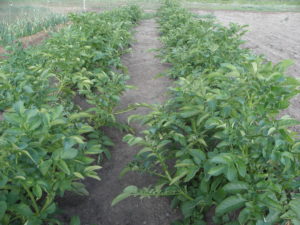Fighting the Biting
By Glen Wunderlich
As home gardeners know, producing successful vegetable gardens doesn’t come without a fight. If it’s not wildlife such as deer, raccoons, rabbits or the like, it’s insects that’ll take a bite from your plants long before any human has an opportunity to do so. However, before getting into what may have become a revelation to repel bugs, instead of various treatments after their presence and disappointing effects on plants, let’s look at how voracious insects find food in the first place.
A mosquito expert from Baylor University sheds light on just how their meals of blood are located. Jason Pitts, Ph.D., assistant professor of biology in Baylor University’s College of Arts and Sciences, studies “host seeking”—how mosquitoes find their next blood meal. He said odor is a major factor why mosquitoes bite some people more often.
“Many insects find their way around the world through their sense of smell, even more than vision,” Pitts said. “Mosquitoes and other insects really are adept at finding places to lay their eggs or finding flowers on which to feed or finding people on which to blood feed just by the sense of smell.”
“Females are able to track upwind. They literally track,” Pitts said. “Once they get that stream of odor, they fly in and out of the stream of odor to orient themselves to try get to the host.”
It is not just odor. Heat—at very close range—also is very attractive for female mosquitoes.
“Mosquitoes are exquisitely sensitive to differences in temperature on surfaces. When it comes to heat or carbon dioxide, both can be beacons for mosquitoes as well,” Pitts said.
“Once a mosquito lands on the skin, they taste the skin to decide whether this is a good host or not,” Pitts said. “They can actually taste DEET, which is long-range repellant. They can smell it and avoid it. When they taste it, they will also fly away. Therefore, we know that taste is also important in some ways. Taste is the final choice before blood feeding.”
Mr. Pitts goes on to mention that reducing breeding area sources can help, but heck, Shiawassee County has more than its share of low ground – even swampland – and if all those smart folks in Washington D.C. can’t drain the swamp, just how are we going to do it?
Use DEET and cover exposed skin. DEET is some nasty stuff and in concentrated formulas can melt plastic! Yuk! And, wearing long-sleeved shirts in this heat is about as tortuous as bites themselves. Or, we can just stay indoors during the peak biting times of dawn and dusk.
Relative to the home garden, I may have stumbled onto the answer to repel animals and insects that sample my homegrown vegetables. Without fencing of any type, there are plants animals do not prefer such as onions, garlic, pumpkins, and melons. The secret with melons may be landscaping fabric that seems to spook wild game. Although I can’t be sure definitively, I do know they don’t mess with our watermelons and cantaloupe surrounded by the black plastic.
Now, let’s consider insects and their uncanny sense of smell. I’ve often wondered how Colorado potato beetles find potato plants – plants that are otherwise left alone by other critters. In the past, we’ve been inundated with them and I’ve learned to spot the egg masses on the underside of leaves. But, with about 40 potato plants thriving this season, not one egg mass has been seen.
In fact, a mere total of 4 adult beetles have been picked off. The difference this year in technique attributable to minimizing these destructive pests may just be the fertilizer: Milorganite – an non-burning organic fertilizer that stinks. The plants are bigger and healthier than ever and virtually no bugs.
We’ll keep you posted later in the season but a stinky garden may be the best repellant yet.




